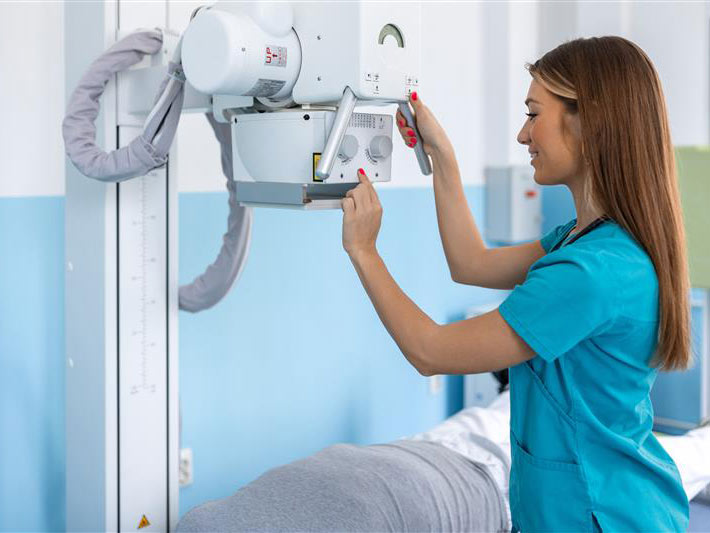
Imagine being the professional who captures the image that helps diagnose a broken bone or a lung condition—providing critical insight to a physician making a life-saving decision. This is the role of an x-ray technologist, a healthcare worker trained in using diagnostic imaging equipment. If you're curious about how to get x ray certification, what it involves, and how long it takes, this guide will walk you through the full process.
An x-ray certification is not just a credential; it's a formal recognition that you possess the technical knowledge, clinical skills, and ethical standards needed to perform diagnostic radiologic procedures safely and effectively. Let’s explore what this certification entails, why it’s important, and how you can earn and maintain it.
What is the Job That Requires an X-Ray Certification?
X-ray certification is typically required for anyone who wants to work as a radiologic technologist (also called a radiographer). These professionals operate imaging equipment to produce images of the body’s internal structures, which are then interpreted by physicians.
They often perform tasks like:
- Positioning patients to ensure accurate imaging
- Calibrating and operating x-ray machines
- Following radiation safety protocols to protect patients and themselves
- Assisting physicians in image-guided procedures
Radiologic technologists work in various healthcare settings, including hospitals, outpatient clinics, physician offices, and imaging centers. Their work is crucial in helping diagnose conditions such as fractures, infections, and abnormalities in the chest, abdomen, or limbs.
How to Get X Ray Certification
So, how to get x ray certification? The pathway typically consists of three key steps: education, clinical experience, and successful completion of a certifying exam.
1. Complete a Formal Education Program
The first step is to enroll in a radiography or radiologic sciences program accredited by a recognized body, such as the Joint Review Committee on Education in Radiologic Technology (JRCERT). These programs are typically offered at the associate or bachelor's degree level, and they combine classroom instruction with clinical practice.
Curriculum topics often include:
- Anatomy and physiology
- Radiographic procedures
- Radiation physics
- Image evaluation
- Patient care and ethics
2. Gain Clinical Experience
A significant portion of x-ray certification training involves hands-on learning in clinical settings. Under the supervision of licensed technologists and instructors, students practice:
- Patient communication and preparation
- Equipment handling and safety measures
- Performing actual x-ray procedures
This clinical training helps students apply their theoretical knowledge in real-world scenarios and build professional confidence.
3. Pass a Certification Exam
After completing a formal education and gaining clinical experience, the next step is to sit for a national certification exam. The most commonly recognized credential in the United States is offered by the American Registry of Radiologic Technologists (A.R.R.T.).
The A.R.R.T. certification exam evaluates your knowledge in areas like:
- Radiation protection
- Image production and evaluation
- Patient care
- Procedures and positioning
Passing this exam demonstrates your readiness to enter the field as a qualified radiologic technologist.
How Long Does it Take to Get X Ray Certification?
One of the most frequently asked questions is: how long does it take to get x ray certification? The answer depends on the educational path you choose.
Educational Timeline
- Associate Degree: This is the most common route and typically takes about two years to complete.
- Bachelor’s Degree: A four-year option that may offer broader knowledge and more advancement opportunities.
- Certificate Programs: Some individuals who already hold a degree in another field may qualify for a shorter certificate program, which usually takes 12–18 months.
In addition to classroom instruction, students must complete clinical hours, which are integrated into most accredited programs and take place simultaneously with academic coursework.
Exam Preparation Time
After completing your program, you may need additional time to prepare for the certification exam. Most students spend several weeks reviewing exam content outlines and practicing with sample questions to ensure readiness.
Does X Ray Certification Expire?
Yes, x-ray certifications do expire and must be renewed periodically to remain valid.
Renewal Frequency
For example, A.R.R.T. certification must be:
- Renewed every year, with a renewal fee
- Supported by continuing education credits: Technologists are required to complete 24 Continuing Education (CE) credits every two years
This system ensures that certified professionals stay current with industry best practices and technological advancements.
Continuing Qualifications Requirements (CQR)
In addition to annual renewals, A.R.R.T. also requires technologists to meet Continuing Qualifications Requirements every ten years. This process includes a self-assessment and may involve targeted CE activities based on the results.
What is the A.R.R.T. Certification?
The American Registry of Radiologic Technologists (A.R.R.T.) is one of the most widely recognized credentialing organizations in the radiologic sciences field. It provides certification and registration for individuals who meet defined standards in education, ethics, and examination performance.
Certification Process
To obtain an A.R.R.T. certification, candidates must:
- Graduate from an A.R.R.T.-approved educational program
- Comply with the A.R.R.T. Standards of Ethics
- Pass the A.R.R.T. national certification examination
Why the A.R.R.T. Credential Matters
A.R.R.T. certification is considered the gold standard in medical imaging for several reasons:
- National Recognition: It is accepted across the U.S. and often required for state licensure.
- Professional Standards: It ensures consistency in ethical and professional conduct.
- Continuing Education: It mandates ongoing education, helping professionals stay up-to-date.
What Separates A.R.R.T. from Other X-Ray Certifications?
While some states may issue their own x-ray licenses or certifications, A.R.R.T. offers a standardized credential that carries weight nationwide. Some differences include:
- Scope: A.R.R.T. certification can open pathways to additional modalities like MRI, CT, and mammography.
- Ethical Oversight: A.R.R.T. enforces a comprehensive set of ethics rules and professional behavior guidelines.
- Portability: A.R.R.T. certification can streamline the process of working in multiple states, whereas state-issued licenses may have limited reach.
Conclusion
Getting x-ray certification is a structured process involving formal education, clinical training, and passing a national exam. Whether you're pursuing an associate degree or entering a certificate program, the journey involves discipline, dedication, and a commitment to patient care and safety.
From understanding how to get x ray certification to maintaining credentials through continuing education, this field demands lifelong learning and professionalism. With proper preparation, certification through respected bodies like the A.R.R.T. can help ensure your success in a vital healthcare role.
As with any major career decision, take the time to research programs, compare credentialing requirements in your state, and map out a plan that aligns with your goals. By doing so, you’ll be one step closer to making a meaningful impact in the world of medical imaging.

